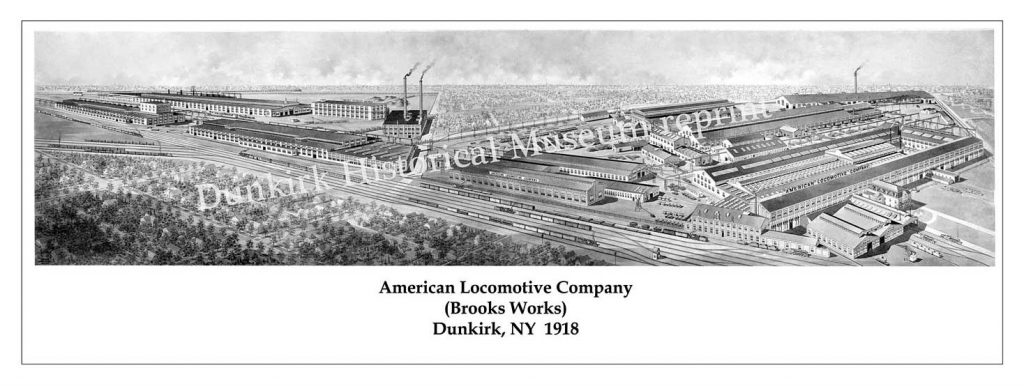The 1851 arrival of the railroad terminus between New York City and Dunkirk, NY, brought jobs to the New York and Erie Railroad repair shops located in the village of Dunkirk. When financial problems arose, New York and Erie Railroad President Jay Gould and his board decided to close those shops in Dunkirk, moving operations to their Buffalo facilities. Horatio Gates Brooks, then superintendent of that railroad, brought together financiers who leased those shops from the Erie Railroad and formed the Brooks Locomotive Works. Brooks, who had started in the railroad business as an apprentice at sixteen, had been one of the engineers on the first train that had arrived in Dunkirk in 1851 at the completion of the terminus. Brooks served as president of the new firm, M.L. Hinman served as secretary and treasurer, and the company opened on November 11, 1869.
Over the next 59 years, the firm was swept along by national industrial events that included financial crises in the 1870’s and 1890’s. At times the firm operated at great loss with widespread layoffs. Yet in 1880, Brooks felt confident enough to construct new buildings and buy improved machinery, then to purchase the plant from the New York and Erie Railroad in 1883. In 1887, the year Brooks died, the firm employed 1,000 men and by 1900 the Brooks Works was the fifth-largest manufacturing plant in New York State.
The Brooks Locomotive Works consolidated with other similar locomotive plants in 1901, as it merged to create the American Locomotive Company (ALCO). The plant continued to produce steam locomotives until 1928, after which time it continued to produce just locomotive parts. Between 1869 and 1928 the plant built 13,245 steam locomotives, an average of 3 engines every working day. In its best year, 1901, the plant produced 382, while its worst, in 1874, saw only 6 made. Producing diversified products extended its life, yet management later shifted locomotive production elsewhere.
The plant became ALCO Thermal Products in 1934 and again diversified production allowed survival amid growing economic difficulties arose throughout the industrial Northeast. In 1962, the facility was sold, but a group of Dunkirk citizens, led by Malcolm Reed and the Botta Bond group, campaigned to purchase the ALCO property, leading to formation of the Progress Park. Roblin Steel, Plymouth Tube, Cenedella Wood Products,and Alumax Extrusions occupied the site. In time these too would close or move out.
Dunkirk’s railroad era was over.

